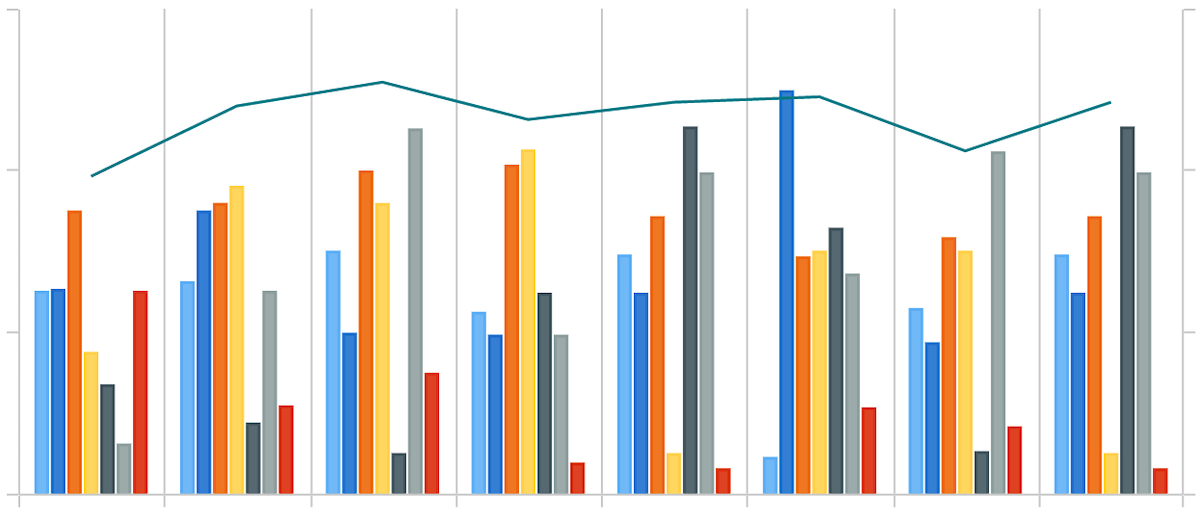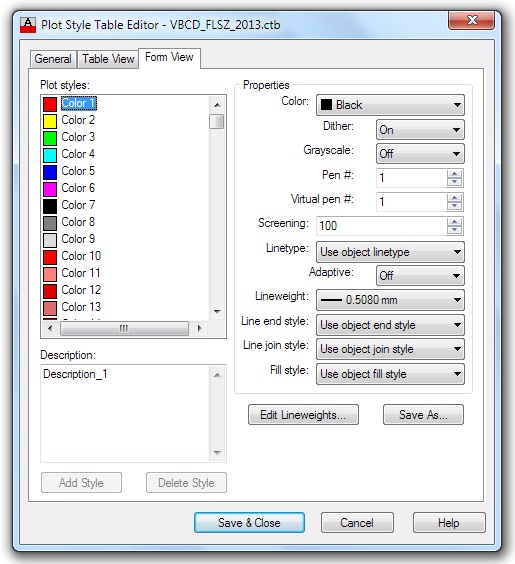Plots Styles
Posted : admin On 3/30/2022
Revit doesn’t have plot styles. But certainly, we can control how the objects to appear when we plot. Objects in Revit is controlled by object styles. You can access object styles in Manage tab, Settings panel. As you can see below, in object styles dialog box you can control the line properties. These plots were generated with the default matplotlib parameters. Without this change, most styles will default to the 'jet' colormap, which is terrible for so many, many reasons. Built with Matplotlib 1.5.1. Source code for this gallery available on github. 16.1-8 Section 16.1 - Plot Styles (CTBs) s-n – 6 Layer Color Chart All colors are assigned a Pen number based the ending number of the color. Colors ending in 0 plot in true color and are assigned a Pen 4 width. If the color is in a “screened” row, it will plot gray with the corresponding Pen width. Types of MATLAB Plots. There are various functions that you can use to plot data in MATLAB ®.This table classifies and illustrates the common graphics functions. Let’s try to create a new plot style. You can create an STB file using Manage Plot Styles. You can access it from AutoCAD application menu print manage plot styles. This will open a folder. Double click add-a-plot style table wizard shortcut. This wizard will help you to create your STB. Let’s see the wizard pages: This is an introduction.
Issue
When plotting/publishing an AutoCAD drawing, the Plot Style Tables available from the Plot dialog box do not match the Plot Style Tables saved in your Plot Style Table Search Path. Even though the desired CTB is saved in the Plot Style Table Search Path, configured from the Files tab of the Options dialog box, the CTB is missing from the Plot dialog box.
Diagnosing the Issue
AutoCAD offers two ways to manage the way drawings plot; by color, or by style. These two methods are managed through the use of CTB files for color plotting, and STB files for style-based plotting. The primary difference between these methods is the property that determines the plotted color, screening, and lineweight of the objects in your drawing. When using a CTB Plot Style Table, the color of an object determines the plotted appearance of your drawing. By contrast, when using a STB, a separate Plot Style property determines the plotted appearance of your drawing.
Despite each of these methods being part of the software for many years, CTB or color-based plotting remains the most popular method among AutoCAD users. Since which of these methods AutoCAD uses is determined on a drawing-by-drawing basis, the issue of missing CTB files is most often a result of a drawing being set to use an STB file instead.
To determine if your drawing is configured to use a STB:
- Open the affected drawing file.
- Start the PLOT command.
- Look at the Plot Style Table group in the upper-right corner of the Plot dialog box to see whether the list of available plot style tables has a CTB or STB extension. Notice in the illustration below, the list of available styles each have a STB extension.
Plot Styles Location Autocad

Solution
Do the following to change a drawing from using style-based (STB) plotting to color-based (CTB) plotting:
Plot Styles File
- Open the affected drawing file if it isn't already.
- Enter CONVERTPSTYLES at the command line. The warning dialog box (shown below) opens.
- Click OK from the AutoCAD dialog box (shown above) to confirm you would like to convert the drawing to use color-dependent plotting.
is an option for plotting and related functions that specifies styles in which objects are to be drawn.
- PlotStyle->g specifies that a graphics directive g should be used to draw all the main objects in a plot.
- PlotStyle->{g1,g2,…} specifies that successive directives gi should be used cyclically for successive objects.
- The directives that can be given include:
Dashing[{w1,…}] dashing specification Directive[g1,g2,…] composite graphics directive EdgeForm[g] edge-drawing specification FaceForm[g] face-drawing specification Glow[c] glow color GrayLevel[i] intensity Hue[h] hue Opacity[a] opacity PointSize[d] point size Red,Blue, etc. named colors RGBColor[r,g,b] RGB color Specularity[s] surface specularity Thickness[w] line thickness - For individual gi, a list of directives is equivalent to Directive[…]. For a single g, a list of directives must be given as {list}.
- PlotStyle can apply to points, lines and surfaces.
- PlotStyle->None specifies that the main objects in a plot should not be drawn explicitly, though mesh and filling are not affected.
- If an explicit setting is given for ColorFunction, MeshShading or ContourShading, it is used in preference to the setting for PlotStyle.
Basic Examples(5)
Plot and related functions will automatically style multiple curves:

Explicitly style different curves:
Add specularity to a surface:
Use transparency to show hidden features:
Use transparency to show overlapping regions:
Where Does Autocad Save Plot Styles
PlotMarkersFillingStyleMeshStyleBoundaryStyleColorFunctionJoined
- ▪▪▪
- ▪▪▪▪▪
Line Styles Plots
- ▪